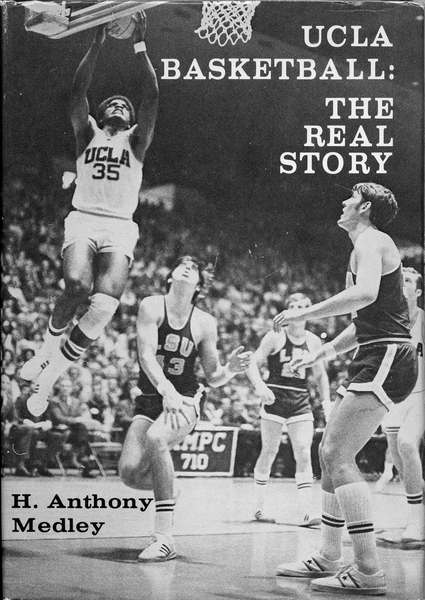|
Out of print for more than 30 years, now available for the first time as an eBook, this is the controversial story of John Wooden's first 25 years and first 8 NCAA Championships as UCLA Head Basketball Coach. Notre Dame Coach Digger Phelps said, "I used this book as an inspiration for the biggest win of my career when we ended UCLA's all-time 88-game winning streak in 1974." Compiled with more than 40 hours of interviews with Coach Wooden, learn about the man behind the coach. Click the Book to read the players telling their stories in their own words. This is the book that UCLA Athletic Director J.D. Morgan tried to ban. Click the book to read the first chapter and for ordering information. |
|
The Perfect Game (7/10) by Tony Medley Run Time 118 minutes. According to the story (which was completed in 2008, but not released until now), Cesar Faz (Clifton Collins, Jr.) is fired by the St. Louis Cardinals and returns to Monterrey to take a menial job and drink a lot. He gets sort of conned into coaching a bunch of little tykes who love baseball. Whatís rewarding about the film is how it shows these impoverished, enthusiastic children going across the border to take on their bigger, richer, American opponents, the trials they faced and their dogged determination. Although this is an entertaining film, there are lots of factual gaffes in the film that seriously mar it. For instance, at the end of 1957, 21-year-old Brooklyn Dodgers pitcher Sandy Koufax was a little known bonus baby whose three year career showed a record of 9 wins and 10 losses. Hardly a household name, only the most dedicated baseball fan knew who he was. Yet director William Dear and screenwriter W. Wiliam Winokur, have these impoverished Mexican 11-12 year olds idolizing him. Thatís just one of the grossly inaccurate Hollywood touches that mar what is otherwise a rewarding story of this group of inspirational children from Monterrey, Mexico, who reached the 1957 Little League World Series under Faz, their charismatic coach. Adding heart to the film is their priest, Padre Esteban (Cheech Marin). But Dear and Winokur really reach for it to emphasize the racism of their opponentsí coaches and the police, and the way the young Mexicans reach out to a black opponent who is being ostracized by his teammates in the American South. Frankly, I doubt if there were any Little League teams in the South in 1957 that had a black player, so these scenes are probably unnecessary fantasy. It is hard to lend credence to the heartwarming incident in the film. There is also a reference to Rogers Hornsby having been connected with the St. Louis Cardinals while Cesar was working for them in the mid-50s. As far as I know, the Cardinals traded Hornsby to the Boston Braves in the spring of 1927 (after he managed them to a thrilling 7-game World Series win over Babe Ruthís Yankees in 1926) and he never returned. The movie apparently didnít receive permission from the Cardinals or Major League Baseball to use the Cardinals distinctive uniform, the best in baseball, with a bat with a red cardinal sitting on the end of it across the chest. The bat and cardinal are missing from the St. Louis uniform in the film. Another thing that you would never have seen in 1957 is pitchers always pitching from a stretch. I was a pitcher in 1957. Itís easier and more effective to pitch with a normal windup. Pitching every pitch from a stretch started maybe a couple of decades ago when the use of relief pitchers as specialists became so widespread that now starters only pitch 6 innings and three other guys finish the last three innings. The cockeyed thinking is that they will be pitching with base runners, so they should always pitch from a stretch. This is just one of the idiotic theories that have become common practice in todayís baseball, a microscopic imitation of the game I grew up with. But in this film every pitcher pitches from a stretch. Itís not only stupid for todayís pitchers to do that, but in Little League the base runners canít get a jump on the pitcher because their foot canít leave the base until the pitcher releases the ball, so thereís no ďholding a runnerĒ on base (which is the purpose of the stretch). All this adds up to people making a picture about the game they love but donít come close to understanding. This film is an example of filmmakers taking a terrific story and, instead of telling it straight up, adding false touches to it that are unnecessary and degrade the final product. Even so, the germ of the factual story is told and the film is touching and entertaining. Stick around for the closing credits because they are shown with interesting archival photos of the actual team and players. July 18, 2008
|
|
|
